SWEDEN
History

History
Cities in SWEDEN
| Stockholm |
- History
Prehistory
 Rock paintings SwedenPhoto: Olof Ekström CC 3.0 Unported no changes made
Rock paintings SwedenPhoto: Olof Ekström CC 3.0 Unported no changes made
About 9000 BC, people first appeared in southern Sweden, hunter-gatherers, belonging to culture groups from Denmark. Among other things, axes and other tools from reindeer antlers, elaborately carved harpoons and tips of reindeer antlers or bone have been found. After that, Northern Sweden was colonized both from the east (Finland) and from the west (the Norwegian coast). Around 4000 BC these cultures were supplanted by the emergence of the earliest peasant culture, part of the Western European funnelbeaker culture. Under the this influence, megalithic burial vaults were built in southern and eastern Sweden. During the early Bronze Age (c. 1800 BC), many reliefs and rock paintings were made in Central and South Sweden. The images usually consist of men, animals, ships, farming tools, axes and other weapons. The Bronze Age begins in Sweden with the import of bronze objects from Central Europe. A private bronze industry soon developed. In the transition from Bronze to Iron Age burial under boat-shaped monuments was common along the Baltic coast.
Middle Ages
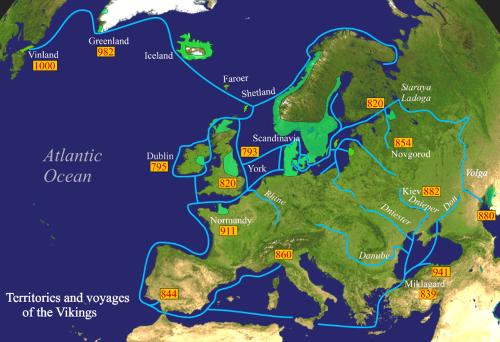 Territories and voyages of the Vikings, SwedenPhoto: Bogdangiusca CC 3.0 Unported no changes made
Territories and voyages of the Vikings, SwedenPhoto: Bogdangiusca CC 3.0 Unported no changes made
In the Viking Age (800-1050), the inhabitants of the southern part of present-day Sweden moved west with the Danes and Norwegians. The inhabitants of eastern Sweden moved southward along the great rivers in Russia to the Black and Caspian Seas. Gotland and the town of Birka were important trading posts in Sweden. In 900, the Swedish Vikings conquered the Danish trading center in Schleswig, Hedeby. The Christianization of Sweden proceeded slowly. Sweden was not officially part of the Roman Catholic Church until 1103. Erik IX the Saint founded a new dynasty around 1150. This dynasty was succeeded by the Folkunger. Their power for a long time prevented resistance from nobles and clergy. One of them, Magnus, was deposed from the throne in 1364 and the Mecklenburger Albert was elected king. When he too seemed to gain a lot of influence, the Dano-Norwegian queen Margaret was called to the rescue, who defeated Albert in 1389 and was made queen under strict conditions. At the Union of Kalmar (1397) her succession was arranged and Norway, Sweden and Denmark were also legally brought under one king.
At the end of the Middle Ages, the lower classes, especially the peasants, opposed the union and the king, Erik of Pomerania. The higher positions sometimes followed hesitantly. A Reichstag in 1435 proclaimed the people's leader Engelbrechtsson as governor, who was killed by Magnus the following year. A number of fellow citizens now elevated Karel Knutsson Bonde to governor, later to King Charles VIII, who reigned for three short periods. When his power threatened to become too great, the nobility and clergy turned to Christian I of Denmark. After the death of Charles VIII (1470), Sten Sture and his relatives acted successively as government officials. The older Sten defeated the Danish king Christian I in 1471, the younger Sten Sture was killed in 1520 against Christian II. This was now supreme in Sweden and with him a majority of nobility and clergy. The execution, on Nov. 8. 1520 in Stockholm, on the orders of Christian II, of a hundred clergy and nobles and their servants (the so-called Stockholm massacre) sparked a revolt. It was led by Gustav Wasa, a young nobleman who was supported by the farmers of Dalecarlia. The Reichstag proclaimed him king in 1523.
New History
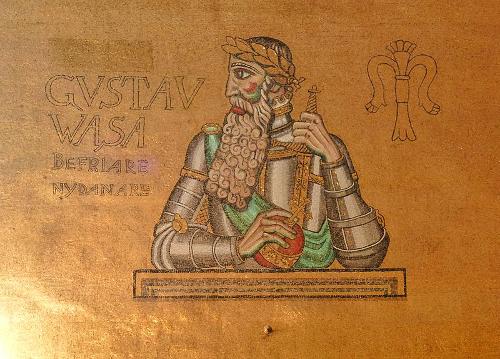 Gustav Wasa SwedenPhoto: Holger.Ellgaard CC 3.0 Unported no changes made
Gustav Wasa SwedenPhoto: Holger.Ellgaard CC 3.0 Unported no changes made
Gustav has made a lot of opposition in making Sweden a well-governed and defensible country. Creating a skilled bureaucracy and a ready army cost a lot of money and the creditors, especially the Hanseatic League, insisted on repayment. Gustav Vasa reigned until 1560; Sweden's tendencies to expand towards the countries surrounding the Baltic Sea threatened to lead to an alliance between Denmark and Poland. Due to Danish ownership in Schonen, Sweden was virtually cut off from the open sea. A relative standstill came under the rule of Gustav's sons Erik XIV (1560-1568) and Johan III (1569-1592). The latter tried to restore Catholicism. Under Charles IX (1604-1611) the first attempts were made to conquer the Baltic Sea countries, but these failed. Under the rule of his son, Gustav II Adolphus, Sweden's great expansion of power began. He conquered the land between Riga and the Gulf of Finland and invaded the German lands. At the Peace of Westphalia in 1648, Sweden acquired the dioceses of Bremen and Verden and Western Pomerania. At the peace in 1658, with Denmark, in addition to the four coastal landscapes also Trondheim and Bornholm. Then Sweden was at the height of its power for a short time.
The most important domestic events during the 'Greatness Age' (1611-1718) were the formation of the 'form of government' in 1634 and the abdication of Gustav II Adolphus' daughter and successor Christina on behalf of Charles X Gustavus. This form of government had already been planned during the lifetime of Gustav II, but was not implemented by Oxenstierna until after his death: the principal departments were to be administered by colleges, the chiefs of which sat in the Council of the Reich appointed by the king. Also of great significance was the 'reduction' accepted by the Reichstag at the suggestion of Charles XI in 1680: the income and wealth of the Crown, considerable since the secularization, had been reduced both by the war costs and by the wastefulness of Queen Christina and mainly belonged to the nobility. A commission had been given the task of compelling the nobles, after investigation, to return the property which was ipso jure to the Crown, a measure which aroused bitterness especially in Poland and the overseas territories. The Great Northern War (1700-1718), at the time of Charles XII, ended Sweden's position as a great power. After his death and the debacles of 1720 and 1721, the Reichstag limited the king's power, increased the influence of the parliament, which in future would compose the Reich Council. Charles's successors were no major monarchs. An attempt by Adolf Frederik to strengthen the royal authority failed ingloriously. Two parties were alternately in charge during this 'freedom struggle' (1719-1772).
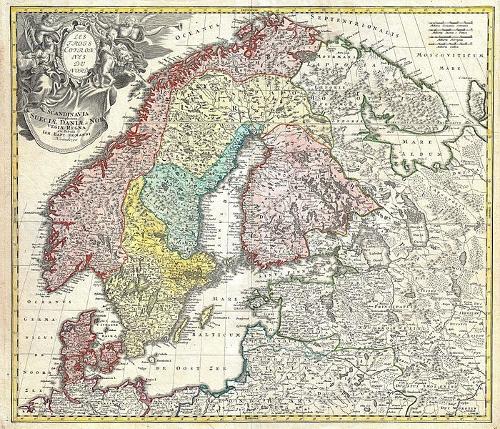 Map of Scandinavia 1730Photo: Public domain
Map of Scandinavia 1730Photo: Public domain
Around 1770, there seemed to be a danger that Russia, as in Poland, might intervene in Swedish internal affairs and would like to undermine the country's independence. The new King Gustav III, in consultation with the French government, ventured a 'coup d'état' on August 12, 1772, strengthening the royal authority and good relations with the traditional ally. Throughout his reign, the king faced opposition, especially among the nobility, who committed treason during a brief conflict with Russia (1788-1790) and conspired in 1792, led by Anckarström, and at the masked ball in the Stockholm opera committed a deadly attack on the monarch. During the wars of coalition Gustav IV remained English-minded; after the Peace of Tilsit, the English took possession of the Danish fleet, but made no attempt to support the Swedes in repelling an expected attack by France's allies, Denmark and Russia. Finland was occupied in 1808. As a result, once again, the nobility forged a conspiracy against the inept Gustav IV. Adlersparre advanced to Stockholm. Adlercreutz took the king prisoner. The Diet declared him fallen from the throne and proclaimed his uncle Charles XIII king, also established a new 'form of government', which considerably limited the princely power to the benefit of parliament. When the Augustenburg Duke Christiaan August, appointed as successor of the childless King Charles XIII, died suddenly in 1810, a successor was found in Paris in the person of Jean-Baptiste Bernadotte, maréchal de France, for whose skills proved in the last war too as administrator people in Sweden were greatly admired. The new heir to the throne, also regent for his adoptive father, sided with Russia and the anti-French coalition in 1812. He was promised that in the coming peace he would obtain Norway in exchange for Finland. This was effected when the Norwegian Storting elected the Swedish king Charles XIII as king of Norway in 1814. At the Congress of Vienna, Sweden lost Swedish Pomerania to Prussia. The areas conquered in the 17th century were thus largely lost.
House Bernadotte
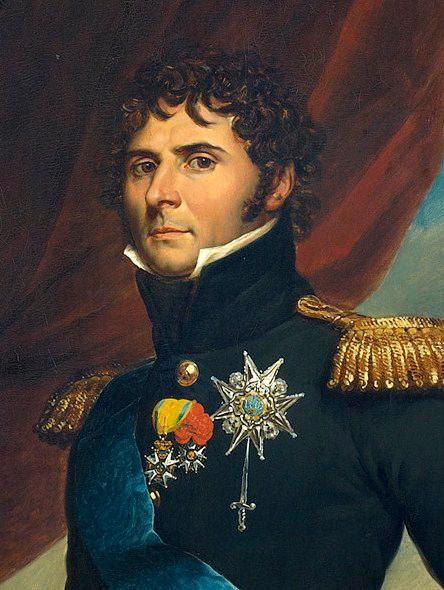 Charles XIV Johan of SwedenPhoto: Public domain
Charles XIV Johan of SwedenPhoto: Public domain
In 1818 the House of Bernadotte came to the Swedish throne with Charles XIV Johan. The history of Sweden was uneventful in the time of the princes of this House. Sweden's power was no longer sufficient for conflicts with Russia. Relations with Denmark became increasingly friendly in the 19th century. During the Crimean War, Sweden and Norway remained neutral. In the interior, in general, the same questions demanded solutions as in other countries, especially in the political field the question of whether the composition of the Reichstag at that time should be changed in four positions. The liberal minister De Geer brought about a 'Reform' in 1865, under which the Swedish parliament, as elsewhere in the future, would consist of two chambers, elected partly directly by the voters from the whole people, partly indirectly by the representatives of the individual regions.
Under the reign of Oscar II (1872-1907), political relations in Sweden radicalized. Since 1889, social democracy also began to emerge, cooperating with the radicals in the struggle for universal suffrage. The introduction of a protective system in 1887 worsened relations with Norway. This eventually led to the secession in 1905, which was peaceful under the influence of peaceful currents in Sweden. Under Gustav V (1907-1950) universal suffrage for the House of Representatives was established. In 1914 a conflict arose between the king and the liberal cabinet over the defense of the country, in which the ministry had to give way as a result of a peasant march to Stockholm. In the First World War, Sweden remained neutral; King Gustav established a collaboration with the other, equally neutral Scandinavian countries. After socialists had already joined the government in 1917, Sweden got its first socialist cabinet in 1920 under K.H. Branting. The Social Democratic Party was from now on the strongest party and has been in government almost continuously since 1932.
During the Second World War, Sweden was neutral again. After the Russian raid on Finland, many wanted to come to Finland's aid. When Norway was occupied by the Germans, Sweden was forced to allow the passage of Germans through Swedish territory. This conflict with neutrality did not end until mid-1943. After the war, Tage Erlander took over the reins. Under his rule, Sweden became a member of the United Nations, of the Council of Europe, and of the Organization for European Economic Co-operation (later OECD). Sweden did not join the European Communities, but the European Free Trade Association. His neutrality policy also did not fit in with NATO membership.
Newest time
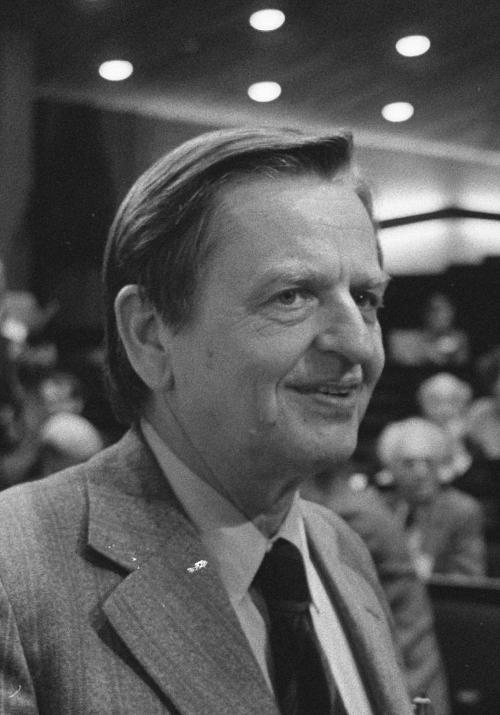 Olof Palme, SwedenPhoto: Rob Bogaerts / Anefo in the public domain
Olof Palme, SwedenPhoto: Rob Bogaerts / Anefo in the public domain
On the domestic front, the social democratic government, led by Olof Palme since 1969, increasingly strived for social equality and progress. In September 1973 King Gustav VI Adolph died.
He was succeeded by his grandson Charles XVI Gustav, who no longer had any power due to an amendment to the constitution and fulfilled a purely representative function. In the same year 44 years of social democratic rule came to an end. The Center Party, the Liberal People's Party and the Conservatives formed a new government. In October 1978, the government fell on the issue of nuclear energy. After a broad social discussion, a popular referendum on nuclear energy policy was held on 23 March 1980. The opponents of nuclear energy lost it to the proponents. In 1981, the Conservatives left the government coalition over disagreements over a tax reform. After the elections in September 1982, the Social Democrats led by Olof Palme regained their old position. Palme has acted internationally as a lawyer for Third World countries and as one of the foremost advocates of global disarmament. After the murder of Palme (February 18, 1986) a more pragmatic course was followed. There was also a change in Sweden's traditional foreign neutrality policy. In July 1991, Sweden applied for membership of the EC, making it clear that it wished to participate in the building of a political European Union.
Parliamentary elections in 1991 brought a victory for the Conservatives. Carl Bildt became prime minister of a civil-conservative coalition cabinet. He pursued a rigorous austerity policy to get the slumped Swedish economy back on track. The privatization of state-owned companies was also announced. On 1 Jan. 1995 Sweden joined the EU.
GNP grew in 1995 thanks to an increase in exports of almost 4%. Unemployment remained high: officially it was around 7%, but including participants in job creation and retraining projects, more than 13% of the labor force was out of work.
Persson, who succeeded Carlsson as leader of the Social Democratic Workers' Party, as Minister of Finance had drastically reduced the budget deficit by, among other things, cutting benefits and increasing taxes.
Eugene de Kock, a former leader of a South African death squad, claimed during a trial in South Africa that a division of the South African intelligence service was responsible for the murder of former Swedish Prime Minister Olof Palme in Feb 1986.
21 century
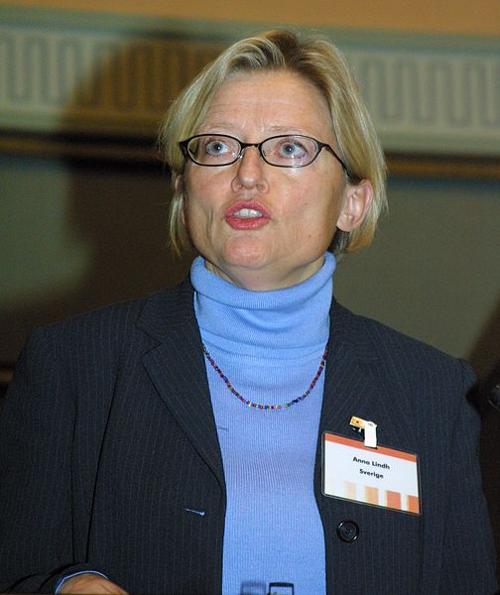 Anna Lindh SwedenPhoto: Vesa Lindqvist/Matti Hurme - Norden.org CC 2.5 no changes made
Anna Lindh SwedenPhoto: Vesa Lindqvist/Matti Hurme - Norden.org CC 2.5 no changes made
The Social Democratic Party has been in power, alone or in coalition form, during the periods 1932-1976 and 1982-1991 and from 1994. Parliamentary elections were again held in September 2002, with the Social Democratic Party being the main winner with 40% of the vote and. As during the previous government period, the party relies on two tolerant partners on the left, namely the Greens and the Left party. The opposition consists of the Moderates (Conservatives), Liberals, Centrists and Christian Democrats.
On September 14, 2003, the referendum was held on whether Sweden should introduce the Euro as legal tender. The population ultimately voted 56% against the abolition of the crown. The referendum was overshadowed by the brutal murder of the Secretary of State, Anna Lindh. She, like Prime Minister Persson, was a stated supporter of the introduction of the Euro and led the campaign.
The murder of Anna Lindh shocked Sweden's mostly relaxed political climate. But it also brought back the memory of 1986 when the then Prime Minister Olof Palme was shot on the street while walking. Anna Lindh was succeeded by Latvian-born former Justice Minister Laila Freivalds.
At the beginning of 2005, Sweden was hit by two bad events. The tsunami on Boxing Day in Southeast Asia hit Sweden very hard. In January of a population of 9 million, 52 were dead and 637 were missing. The Secretary of State, Laila Freivalds, is accused of having responded too late. She has publicly apologized and indicated that the ministry should be better equipped for these kinds of calamities. A National Crisis Commission is established. In January, the south of Sweden was also seriously affected by a very heavy storm. Many fallen trees (entire forests have been swept away) have led to large-scale and long-term electricity outages.
Parliamentary elections in Sweden took place on Sunday 17 September 2006. The election campaign was short and dominated by discussions about unemployment (high by Swedish standards, but average by European standards), taxation, health care and education. The polls showed that it would be a neck-and-neck race between the left bloc (Social Democrats, Environmental Party and Socialists) and the right-wing alliance (Conservatives (moderates), Liberals, Christian Democrats and the Center Party). It was a narrow victory for the latter. This is a remarkable result given that since 1932 it has only happened twice before that the Social Democrats have lost the elections (in 1976 and 1991). Moreover, the right-wing parties have never before come to power in a period of economic prosperity. In November 2008, Sweden ratifies the Lisbon Treaty. In February 2009, the government broke its policy of not building nuclear power plants. In July 2009, Sweden becomes president of the EU. In parliamentary elections in September 2010, Prime Minister Fredrik Rheinfeldt's center-right coalition just missed a majority. In October he will form a broad minority government. In December, car manufacturer Saab, an icon of the Swedish industry, is declared bankrupt. In February 2012, Crown Princess Victoria gives birth to a daughter. Princess Estelle is the second in the line of succession to the throne. In June 2013, Princess Madeleine, the youngest daughter of the Swedish king, gets married in Stockholm with great interest. In April 2014, Sweden announced an increase in the defense budget due to the unrest in Ukraine and developments in Russia.
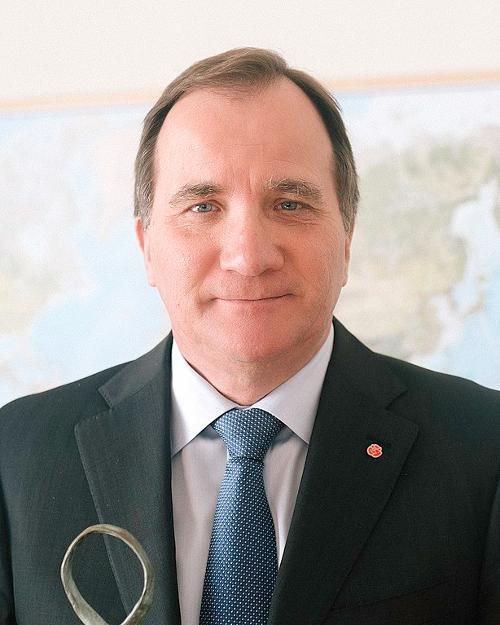 Stegan Lofven, SwedenPhoto: Robvissers 1966 CC 4.0 International no changes
Stegan Lofven, SwedenPhoto: Robvissers 1966 CC 4.0 International no changes
In October 2014, Stefan Lofven becomes the new prime minister and forms a center-left minority government. In the years 2015 to 2017, Sweden faces the refugee crisis and the rise of right-wing anti-immigration parties. In elections in 2018, the result is not clear, but Lofven will become prime minister again in January 2019. In 2020, Sweden will have to deal with the Covid-19 pandemic. Unlike most European countries, Sweden does not opt for a total lockdown.
Outgoing Finance Minister Magdalena Andersson become Sweden's first female prime minister in November 2021, heading a minority Social Democrat government after the Green Party declined to join a coalition after a very public budget dispute.
Ulf Kristersson became prime minster following the September 2022 general election. He heads a coalition government between the Moderate Party, Christian Democrats and Liberals, with external support from the far-right Sweden Democrats.
Sources
Best, J. / Zweden
Gottmer
Carlsson, B. / Zweden
Corona
Danse, W. / Zweden
ANWB
Europese Unie
Europees Platform voor het Nederlandse Onderwijs
Meesters, G. / Zweden
ANWB
CIA - World Factbook
BBC - Country Profiles
Copyright: Team The World of Info